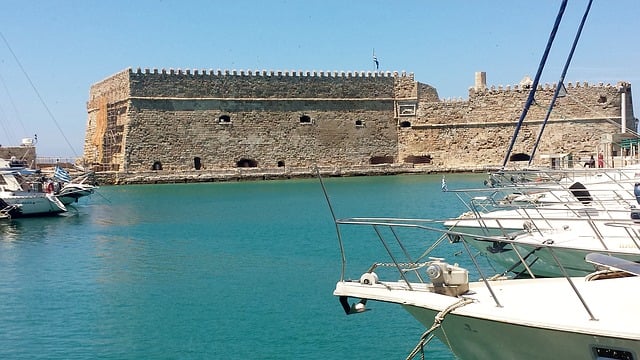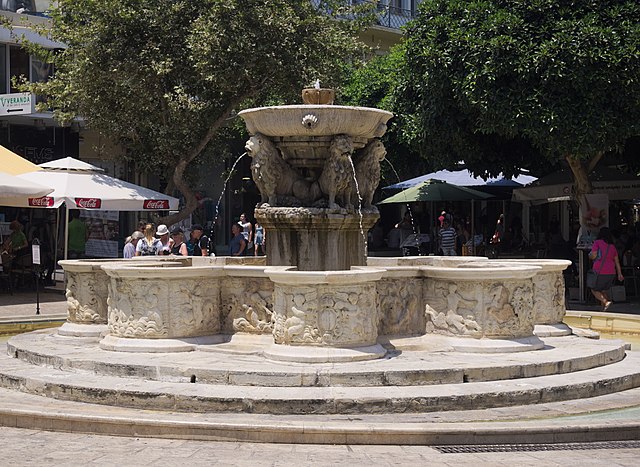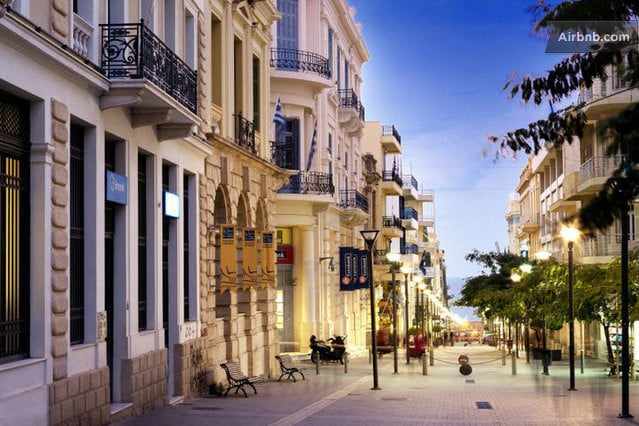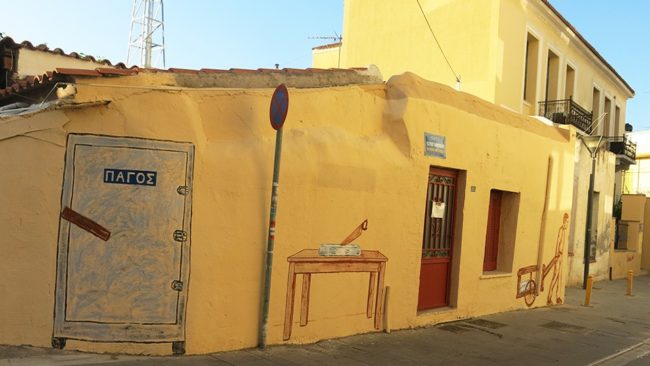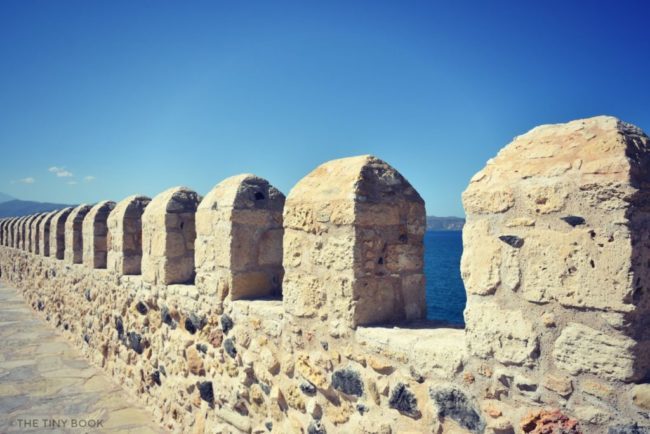They say it’s not as beautiful as Chania nor as romantic as Rethymno. It doesn’t have the mysteries of Elounda, nor the beaches of the Lybic sea. However, Heraklion, the capital of the island of Crete, remains a destination with a complex past and a rich cultural scene.
The city, home to an impressive collection of buildings from different eras, easily portrays examples of the several civilizations that lived and ruled there. For those interested in architecture and local history, the city is an open museum that anybody can visit without needing to purchase a ticket.
1 Morosini Fountain
The beautiful fountain in Lion square was built in 1628, during the Venetian era on the initiative of Francesco Morosini, General Provisioner of Candia (Crete). A complex system of pipelines brought water from the nearby village of Archanes, taking advantage of the natural incline of the terrain, something completely innovative for those times.
The fountain has eight lobes, and each can support up to five people filling their containers with water. Mythological and maritime figures decorate the fountain while water flows from the mouth of less sea-related animals: lions, the symbol of the Venetian Republic.
Fact: The locals call Lion Square simply “the Lions”.
2 The Venetian Loggia
The Loggia in Heraklion is another Venetian building a few meters away from the Lions. This public building was a meeting place for the nobles and rulers; it was here where the most important economic and political decisions were made. The beautiful balconies of the building used to host the heralds of the state when they proclaimed laws and decrees, while the duke used them to watch litanies and parades.
The Loggia is a refined combination of different architectural styles — Doric style on the ground floor and Ionic on the first floor.
Fact: The Loggia is a faithful reproduction of Palladio’s Basilica di Vincenza.
3 25th of August Street
This main pedestrian road in town runs from the central crossroads of Heraklion, down to the Venetian harbor and fortress. The street is home to the most prestigious buildings in the city, such as the Basilica of St Mark, the Loggia and the church of Saint Titus. As you reach the port, at the end of the street, several ouzeries (ouzo bars) serve seafood, and of course, tsikoudia (the local spirit of Crete).
25th of August Street is dotted with the finest Neoclassical buildings of Herakleion; which were built with the specific intention of giving the city a modern flair.
Fact: The street was known as “Odos Planis” (“Illusion Street”) because the nice buildings would trick the eye of visitors into thinking that the city was more elegant than it really was.
4 Lakkos
Lakkos is a lesser-known neighborhood of the underground world of Heraklion. A place made of narrow streets that in the past were inhabited by bullies, prostitutes and rebetes improvising songs on their bouzouki. Hashish was not uncommon here, either. Lakkos was born when the Cretan state ordered that brothels in town be removed far from the city.
With the arrival of prostitutes, a parallel urban underworld came to life. Currently, the neighborhood is part of different re-qualification projects, and it is seeing a new kind of cultural life, made of bars, restaurants and graffiti depicting its past.
Fact: When Crete fell to the Germans, prostitutes were transferred to a hotel to serve the German military.
5 Koules
The Venetian Fortress of Heraklion stands at the entrance to the port. The Venetians called it the Castello a Mare or Rocca a Mare, but today everybody knows the building by its Turkish name: Koules (a word that probably comes from ‘su kulesi’ or water tower).
The fortress is the best-known symbol of Heraklion and hides incredible mysteries and legends about the Cretan rebels who were horribly tortured in its cells.
The fortress is a two-story building and has a total of 26 rooms. There were originally five casemates (areas for cannons) on the ground floor, but the firing would produce a heavy smoke inside the building. Therefore, the cannons were moved to open platforms on the upper floor. The entrance is not free, but it can be seen and admired from different parts of town.
Fact: The ground floor housed a prison. Inside the fortress, there was also a mill, an oven and a chapel.
See all the latest news from Greece and the world at Greekreporter.com. Contact our newsroom to report an update or send your story, photos and videos. Follow GR on Google News and subscribe here to our daily email!



